In West Malling, Kent, there’s a statue of a woman, Hope by Sara Cunnington. The woman strides forward, a dove in her hand about to launch out into the world.

Sara Cunnington: Hope
Hope’s cloak, streaming behind her, is patterned with panels that give the town’s history over the centuries.
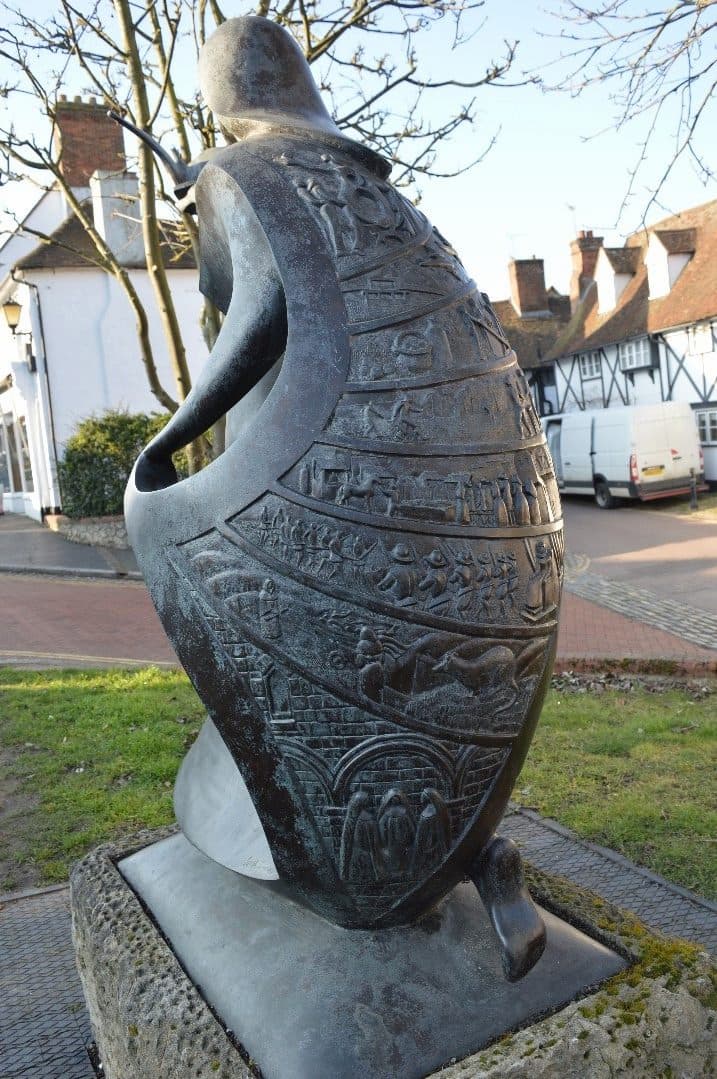
Sara Cunnington: Hope and her cloak
This statue and the town’s history inspired the English composer Nigel Clarke to write a work focusing on the statue. His order of movements doesn’t follow the order of history on the cloak, so the piece will be presented here in cloak order, not in musical order. He also omits some of the town’s history from his music.
The images on the cloak start from the bottom and move upward through time. The panel at the bottom starts us in 1090 when the Benedictine Abbey at West Malling was established by Bishop Gundolph. The Abbey lasted until the reforms of Henry VIII and then was reestablished in the late 19th century.
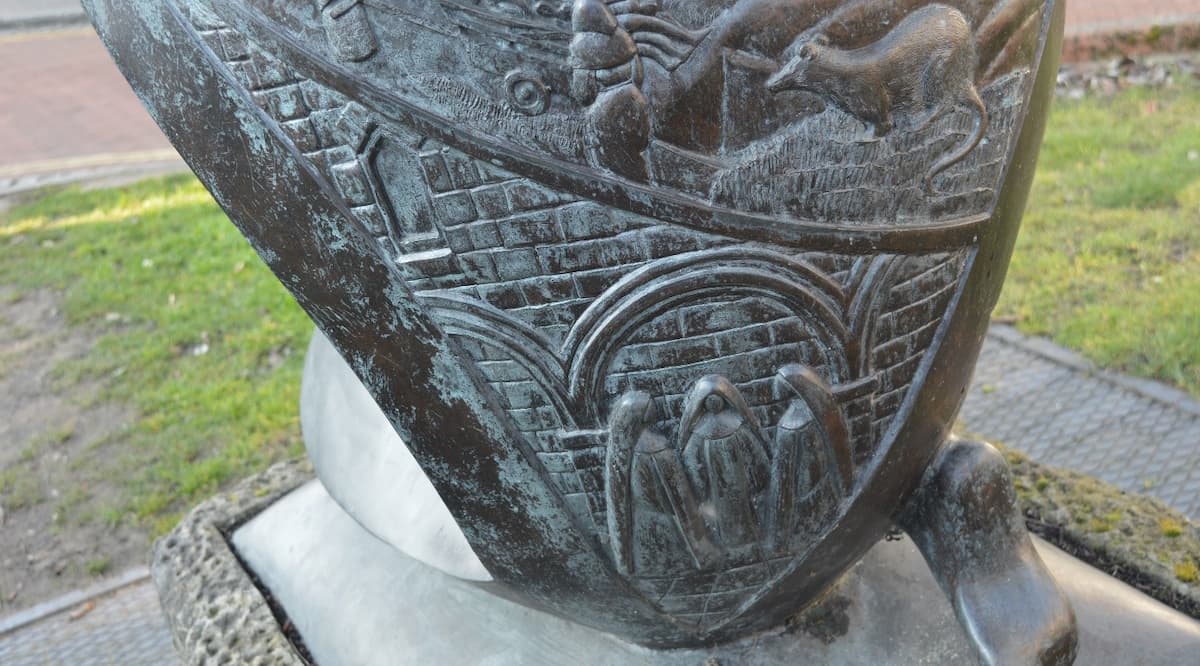
Sara Cunnington: Hope and her cloak, panel 8
The devastation of the Black Death (1348–1349) is memorialized next. There were mass graves in West Malling, and by the end of the plague year, only 15 inhabitants of the town and Abbey remained alive.
Clarke combines the Abbey’s history with its role during the plague year. He opens with a chant-like melody, with silvery bells, until the full horror of the plague, signaled by the Dies irae chant, comes to town.
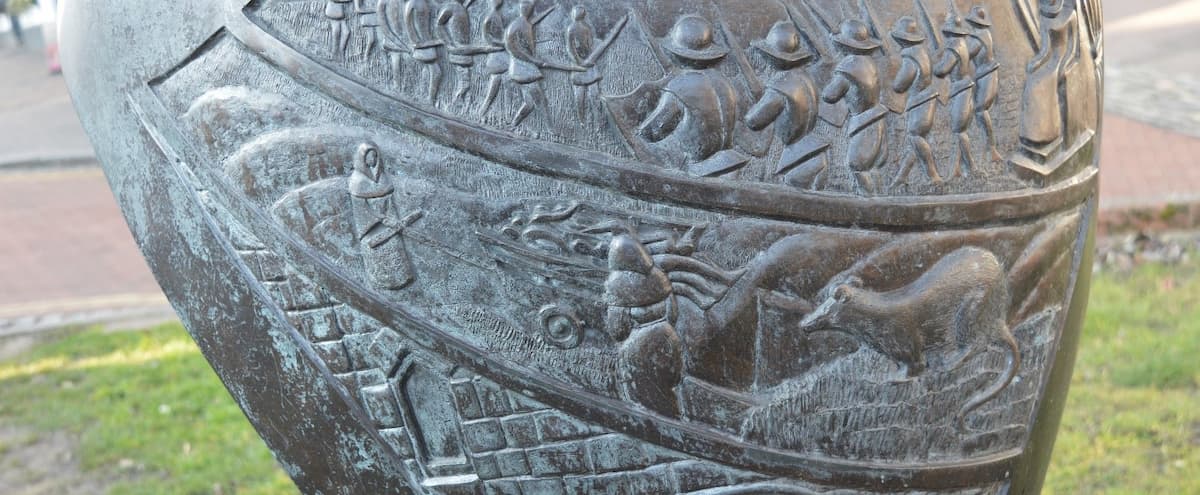
Sara Cunnington: Hope and her cloak, panel 7
Nigel Clarke: Heritage Suite (What Hope Saw) – II. Prayers and Plagues and Hope (Middle Tennessee State University Wind Ensemble; Reed Thomas, cond.)
Queen Mary I, on the right, has her troops put down the rebellion by Sir Thomas Wyatt in 1554. Wyatt was concerned that the English Queen was going to marry Philip II of Spain and return England to the Catholic Church. Mary’s troops were stationed at West Malling.
Clarke has made Wyatt’s Rebellion his final movement but also gives the end of that movement the idea of the statue itself: Hope.
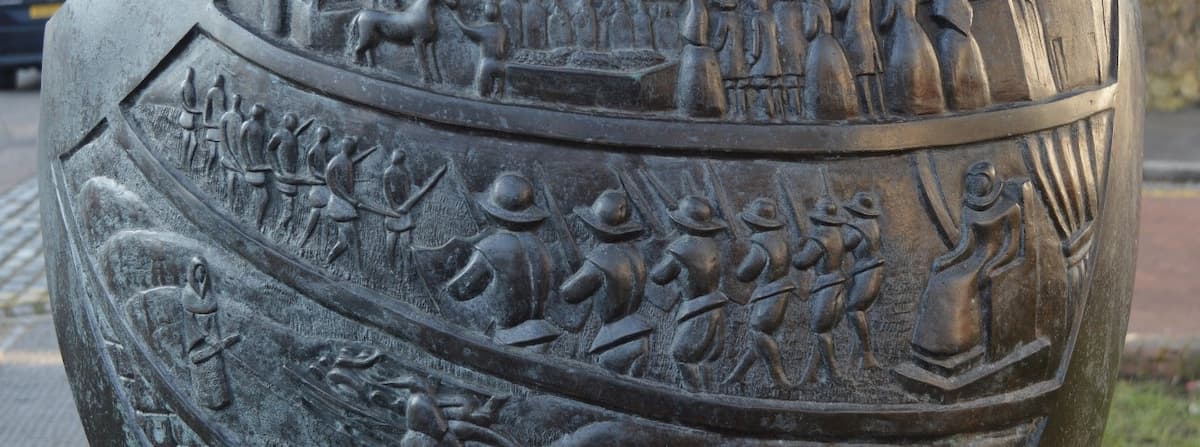
Sara Cunnington: Hope and her cloak, panel 6
Nigel Clarke: Heritage Suite (What Hope Saw) – VI. Wyatt’s Rebllion and Hope (Middle Tennessee State University Wind Ensemble; Reed Thomas, cond.)
The market center at West Malling comes next – this market operated for hundreds of years and, although it was first centered on the Abbey at West Malling, it continued even after the dissolution of the Abbey by Henry VIII.
The abundance of the market is there for everyone – giant carts roll into town, loaded with the wealth of the countryside and signaled by fanfare-like trumpets.

Sara Cunnington: Hope and her cloak, panel 5
Nigel Clarke: Heritage Suite (What Hope Saw) – III. Cornucopia (Middle Tennessee State University Wind Ensemble; Reed Thomas, cond.)
It wouldn’t be life in the British summer without a bit of cricket. The first game recorded in West Malling was played in 1704.
The long summer days, stretched out on chairs beside the cricket pitch, come to life with the occasional ‘knock’ of a ball on the willow bat and the desultory clapping of the spectators. The sun is hot, the beer is to hand, and the game is on, yawn….

Sara Cunnington: Hope and her cloak, panel 4
Nigel Clarke: Heritage Suite (What Hope Saw) – V. Warm Beer and Cricket (Middle Tennessee State University Wind Ensemble; Reed Thomas, cond.)
The agricultural bounty of the county of Kent, most notably its hop fields on the right, are on the next panel.
The hop-pickers, who worked on tall stilts, totter around the farm in Clarke’s music.
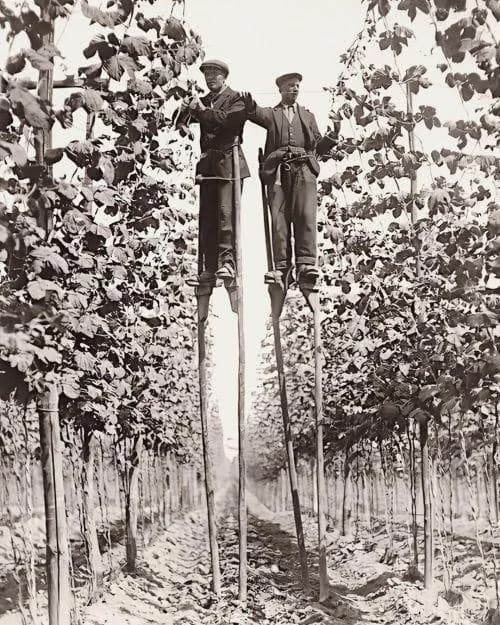
Kent Hop Pickers, 1920s
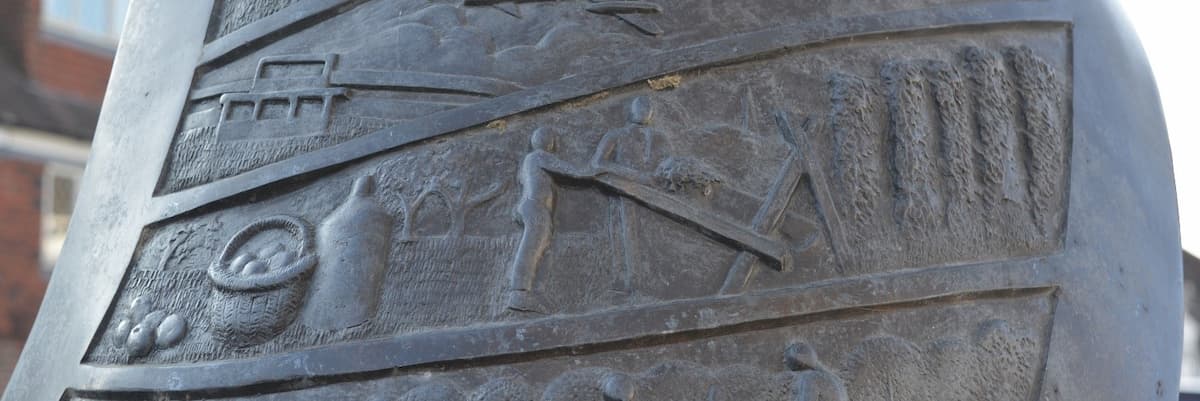
Sara Cunnington: Hope and her cloak, panel 3
Nigel Clarke: Heritage Suite (What Hope Saw) – IV. Hop Pickers Round (Middle Tennessee State University Wind Ensemble; Reed Thomas, cond.)
Next comes the city’s service in WWII, when West Malling Airfield hosted Mosquito squadrons.

Sara Cunnington: Hope and her cloak, panel 2
The top panel brings us up to the current day, showing the citizens of West Malling gathered around the statue.
The opening movement, here given last, is the modern-day town. The vegetable market is now only once a month, having been replaced by the local hypermarket, and the market is now for bric-a-brac and antiques for the passing trade. Kids still run around and, beneath it all is the real heart of the city.

Sara Cunnington: Hope and her cloak, panel 1
Nigel Clarke: Heritage Suite (What Hope Saw) – I. Bric-a-brac Market (Middle Tennessee State University Wind Ensemble; Reed Thomas, cond.)
Clarke’s music looks at the small aspects of a town’s world: what brought it to life, what sustains it, and how it continues on. No matter what happens in the world, West Malling and Hope will carry on. In Clark’s music, he’s fond of having themes from earlier movements pop up in later movements, signaling that habit history has of repeating itself.
For more of the best in classical music, sign up for our E-Newsletter




